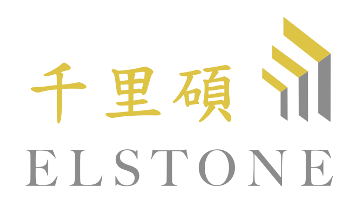No products in the cart.
11Feb
Manufacturing accounting: Your guide to accounting for manufacturing businesses


Though it takes more work than applying a standard overhead rate, it generates more accurate cost estimates. Inventory valuation is about keeping track of the cost of materials, work in process, and finished goods, an essential process in both discrete and process manufacturing. what is the reciprocal of 7 Techniques like First In, First Out (FIFO) or Last In, First Out (LIFO) help assess the value of inventory on hand and the cost of goods sold. An accurate inventory system prevents excess inventory and helps make informed decisions about production needs.
Importance of Accurate Manufacturing Accounting for Businesses
- Manufacturing businesses of all sizes have unique accounting challenges, due in part to long timelines before a product is ready for sale.
- Activity-based costing or ABC costing can provide a unique picture when utilized to reveal products that generate profits vis a vis those that don’t.
- Since adding together direct costs is generally a straightforward affair, this mostly revolves around calculating the per-product share of indirect costs.
However, manufacturing accounting software can automate a significant portion of this responsibility. You or an accountant should still perform reconciliations to confirm the accuracy of your financial records, but it’s much easier than doing everything by hand. In summary, the accounting for manufacturing businesses is much more detailed than is required for a business that maintains no inventory. You need to think beyond profit and loss to manufacturing costs such as the costs of materials, plus the cost to convert these materials into products. This is necessary, for example, to understand how you should be pricing your product and how to achieve or exceed your set profit margins.
What is the best ERP for manufacturing in 2021?
This includes tracking direct costs like materials and labor and tricky indirect costs like electricity or rent, showcasing how manufacturing accounting includes accounting data on all operational expenses. It’s all about making sure the total manufacturing cost stays as low as possible without cutting corners, in accordance with best accounting practices. Direct labor costs typically include wages paid for regular hours, overtime and payroll tax information. The chart of accounts is a record of the valid accounts you assign to the business units within your company’s reporting structure. When you set up your chart of accounts, you define the location of the accounts using automatic accounting instructions (AAIs) that indicate which number ranges represent assets, liabilities, and so on.
Cost accounting
These types of highly extensible systems are known as Enterprise Resource Planning (ERP) platforms. It is a tool that companies can use to help manage the finances and inventory of a manufacturing company. Variable costs change depending on the number of units your manufacturing firm produces. A direct cost is an expense that you can easily trace to product manufacturing processes.
Work-in-process (WIP) or work-in-progress inventory refers to products that have made it through part of the manufacturing process but remain unfinished. Though they’re cash-basis accounting definition not ready for sale, these goods are still an asset on your balance sheet. In manufacturing, fixed costs remain consistent no matter how many units you produce.


Table of Contents
Indirect costs are those costs required to run a manufacturing business but are not directly traceable to a product. Think of safety glasses, a facility’s security guard, and depreciation and utilities. Capturing the cost of manufactured goods requires unique considerations and methods. Manufacturing cost accounting systems then must capture different types of bookkeeping accounts and their specifics the cost of manufacturing but be flexible enough for many different manufacturing methods, processes, and technique. Instead, you must allocate each indirect cost to your products using various methods to determine the value of each unit. Direct materials refer to the raw materials that manufacturers transform into finished products.
This method provides a more accurate picture of product costs by identifying the specific activities that consume resources. For instance, ABC can reveal that certain products require more machine setups or quality inspections, leading to higher overhead costs. By understanding these cost drivers, manufacturers can make informed decisions about pricing, product mix, and process improvements. Activity-based costing (ABC) accounts for the overhead and indirect costs used to manufacture a product. If the toothpick shaper employee makes $50 per hour and can shape 1,000 toothpicks per hour, then the activity-based cost of the shaping operation is $0.05 per toothpick.
Perhaps the most important accounting difference between merchandisers and manufacturers relates to the differences in the nature of their activities. On the other hand, a manufacturer must purchase raw materials and use production equipment and employee labor to transform the raw materials into finished products. Variable costs are any production costs that change as you produce more or fewer items.
Accounting for the industry’s expenses allows production managers to streamline and weed out any unnecessary steps in production and also determine a competitive price for their products. Implementing manufacturing accounting systems, especially those designed for discrete manufacturing, is like automating the ship’s course, allowing for a more efficient journey. These systems help automate the manufacturing accounting process, from tracking production costing methods to monitoring inventory levels, thus aiding manufacturing accountants in their daily tasks. The result is a streamlined operation that enhances the accuracy of financial reporting and supports the overall growth of manufacturing operations through the use of manufacturing ERP. For example, a manufacturer of made-to-order furniture would likely employ job costing.
For example, that might include rent for your factory or interest payments on a business loan. As a result, your manufacturing company may get to choose between using cash or accrual accounting. While the cash method is often easier to implement, it’s not always the best way to organize your financial records. Accounting systems for manufacturing allow for real time insights into inventory levels across your organization to drive efficiency.

Leave a Reply